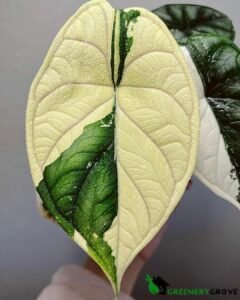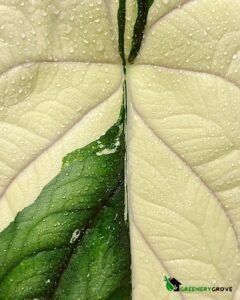Alocasia, usually known as elephant ear plants, is a beautiful genus of tropical perennials. It is renowned for its striking leafage. Alocasias add a touch of greenery to any indoor or outdoor space. It is quite popular among houseplant lovers and gardeners. These plants are aesthetically appealing.
Alocasia plants are aboriginal to tropical regions of Asia, Australia, and the Pacific Islands. They have been nurtured for generations for both decorative and practical purposes. Their outstanding leaves have a variety of forms, sizes, and colors. They have encouraged artists and designers throughout history. These plants are beneficial to us in many ways. They purify the air by eradicating poisons from the environment. They are a significant expansion to any living space. Similarly, their incredible look might cause a state of calm and peace.
In this essay, we will learn about Alocasia plants. We will also know their variety of species, how to care for them, and common problems. Alocasias are one of the best options to add a touch of greenery to your home.
The Origins of Alocasia: A Tropical Treasure
The alocasia plant is a precious gem from a tropical position. The main areas where Alocasia diversity is concentrated are in Asia and Australia. particularly in countries similar to India, China, Malaysia, and the Philippines where they mostly live. These areas have the perfect low rainfall with a glut of rain and high temperatures. It creates an ideal environment for Alocasia to prosper. Australia is a major provider of Alocasia species. The equatorial rainforests and washes of the country offer useful geography for these plants. The unique Alocasia kinds are infamous in the Pacific islets, similar to Hawaii, Fiji, and Tahiti. These islands have developed their unique types of plants. They serve the particular environmental aspects present in each area.
Historical Importance of Alocasia
Alocasia plants have a rich history and cultural value in many Asian communities. Alocasia is a symbol of fortune. It is used for food, medicine, and religious rituals. Asia and Australia have cultivated the variety and beauty of these amazing plants.
Alocasia Varieties: A Colorful World
Giant Alocasia
- Alocasia macrorrhiza: This lofty species is normally known as the gigantic taro. It is one of the largest Alocasia plants. Its gigantic leaves, heart-shaped can be several feet long and wide.
- Alocasia odora: This aromatic cultivar has huge, heart-shaped leaves with a spicy smell. It’s a spectacular addition to any collection.
Miniature Alocasia
- Alocasia reginula: This species is small in size and ideal for limited places. It has bitsy, dark green leaves with tableware patterns. That gives us a peaceful and seductive appearance.
- Alocasia zebrina: This bitsy factory has dark green leaves. It has white lines like zebra lines. It’s a low- conservation factory.
Special Alocasia
- Alocasia amazonica: This species is popular for its dark green leaves with different white lines. It can be used for both indoor and outdoor places.
- Alocasia went: This species has black velvet dark green leaves with silver patterns. It is a slow-growing plant that needs fair attention.
- Alocasia cuprea: This beautiful plant has green leaves with a velvety glimmer. It’s a valuable expansion to any collection because of its different look.
Colorful Alocasia
- Alocasia plumbea: This plant has dark purple leaves with differing silver veins. It has an aggressive look.
- Alocasia micholitziana: This variety has dark green leaves. It’s a popular choice because of its incredible look. There are many other Alocasia variants. Alocasia plants are one of the best options for your home or garden.
How to care for Alocasia
To care for your Alocasia, you should ensure the growth of your plant. Here are some tips:
- Light: Alocasias grow better in bright light. Place it somewhere safe from direct light. Temperature: These plants grow in warm temperatures between 65°F and 85°F. You should not expose them to cold winds. Besides, sudden temperature changes affect the growth of Alocasia. You should be careful about that.
- Humidity: Alocasias need a high-moisture atmosphere. You ought to utilize a humidifier to increment dampness.
- Watering: Check the soil if it dries out. You should water your Alocasia timely. You should Avoid inordinate watering. Because this can beget root damage. You should drain extra water after watering the plant.
How often to water Alocasia
Check the soil by sticking your finger if it is dry or not. If it feels dry, make sure to water the plant.
Soil: The potting mix should be well drained.
Fertilizer: You should feed your Alocasia with a balanced fertilizer.
Alocasia Problems and Solutions
While growing an Alocasia plant you can face some common problems. Here are some common problems and solutions given below:
- Yellowing leaves: It is caused because of underwatering or overwatering. You should Modify your watering timetable. It can solve the problem.
- Brown leaf tips: It is caused by Low humidity. You should use a humidifier to increase humidity.
- Pests: Mealybugs and other insects can sometimes infest Alocasia plants. Treat them with cleanser or neem oil.
How to propagate Alocasia
Alocasia can be easily propagated to extend your collection. There are two main methods: division and offsets.
The division is suitable for adult plants. You should carefully extract the plant from its pot and gently divide the root orb into several sections. You have to put each section in a potting mix.
Offset is a small plant that has been naturally produced on the mother plant.
You have to carefully detach them from the mother plant After developing a few leaves.
Then you have to pot them up separately.
Tips for propagation:
You should use a sharp, clean knife to divide the root.
You have to ensure each part has healthy roots and leaves.
You have to water the newly potted plants regularly.
You have to place the pots in a warm location.
Avoid direct sunlight.
If you take proper steps, your Alocasia propagations should start to grow and develop into healthy plants.
Decor Ideas with Alocasia
You can use Alocasia to improve the indoor decoration of your home and office.
- Living Room: You can place a big Alocasia plant as an amazing centerpiece. You can place a smaller Alocasia in a corner of the room. It adds a touch of greenery.
- Bedroom: Nightstand: You can place a small Alocasia beside your bedtable to add a touch of nature.
- Hanging Plant: You can hang an Alocasia over your bed for an excellent view.
- Bathroom: You can place an Alocasia in your shower for a spa-like environment. You can also add a small Alocasia beside your bathroom sink.
- Kitchen: You can place a small Alocasia in your kitchen.
- Outdoor Space: You can combine Alocasia with herbs in a hanging planter for a decorative collection.
- Desk decor: You can place a large Alocasia on your deck for a tropical vibe.
- Garden Feature: You can plant Alocasia in your garden.
Alocasia in Interior Design
You have to consider the scale of the plant and the size of your space.
You have to blend Alocasia with other plants for an interesting display.
Alocasia prefers bright light.
You should choose a container that completes the plant’s decoration.
Alocasias are enchanting tropical plants. It gives your indoor space an aesthetic vibe. Alocasia has various species, striking greenery, and easy care conditions. they are a popular choice for plant lovers. If you provide your Alocasia with the right care, you can enjoy its beauty for years.
More Blogs


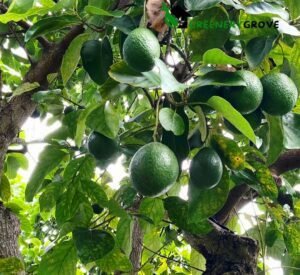

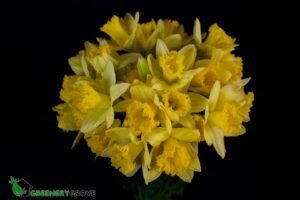

Exploring Daffodils: From Origins to Symbolism and Garden Tips


Alocasia: The Majestic Elephant Ear Plant – A Guide To Varieties, Care, And Decorative Ideas
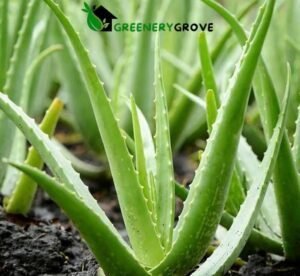

A Comprehensive Guide of Aloe Vera: Benefits, Development, and Uses




